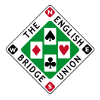
The BBC exaggerated a little when in an obituary report they said that Harry Ingram 'invented' contact bridge: but certainly he was a very live influence during its early years. During the 1920's he was a prominent figure in the world of whist drives and a noted expert at auction bridge. With Stan Hughes as his partner, and usually Simmons and Newmark as team-mates, he played innumerable matches to popularise contract in the early 1930's.
The other great figure of those times was Richard Lederer, and in 1934 Lederer and Rose, Ingram and Hughes, joined forces to play Ely and Josephine Culbertson, Albert Morehead and Teddy Lightner, in the second (and last) Schwab Cup match. Over six days' play at the Dorchester Hotel there was very little in it for five days, but both English pairs played badly on the Thursday and lost a lot of points. As Harry remarked at the time, at least three of the English players were doing a full day's work before the evening sessions, while the Americans did not get up till lunchtime.
The most celebrated incident in this match (press coverage doesn't change over the years) was a hand where Ingram, holding a long string of hearts overcalled with a psychic no-trump. Culbertson doubled and Harry removed himself to two clubs, which again was doubled. After some thought Harry bid his real suit, two hearts, and was doubled for one down, a good result. Ely claimed a foul because Ingram had pondered before rescuing himself from two clubs doubled; Harry's answer was that he was considering some further diversionary move, such as a redouble.
Here is another example of Harry's proclivity for psychics:
|
||||||||||
|
 |
|
||||||||
|
| South | West | North | East |
| Ingram | Konstam | Hughes | Westall |
| - | - | - | 1 |
| 1NT | Dbl | P | P |
2 |
Dbl | P | P |
2 |
3 |
P | 3NT |
| P | 4 |
P | 5 |
| P | 6 |
All Pass |
In the other room Newark and Simmons had an unopposed run to seven clubs against Phillips and myself.
Harry played three times for Great Britain in the European Championship before the war and in 1936 won a notable victory in the Gold Cup over his old rival. This was a feat, for Lederer had such great players as Kosky and Dodds in support. The Ingram one-club was an effective method, anticipating, as Harry was fond of pointing out, many of the popularised systems of today. Another of his inventions was MOT (middle of three) which he explained in his book How to Win at Bridge. This idea was rediscovered by Eric Crowhurst 30 years later and called MUD.
Also in 1936, the first year of television, Harry appeared on several programmes run by Hubert Phillips at Alexander Palace (sic).
After the war Ingram didn;t play much competitive bridge on a national scale but was very active as a writer, lecturer and cruise director. he and his second wife, Eileen, to whom he was very happily married for 23 years, were always to be seen together in the same corner of the Grand Hotel during events at Eastbourne. i last saw him there, still a handsome figure of man at 84, at the Spring Foursomes. having a personal interest in the matter, i asked him about a hearing aid he was wearing. 'They help a bit', he answered. 'The best thing about them, he added, with a glance at a group of well-known bridge raconteurs nearby, 'is that it's easy to switch them off'. Without a doubt Harry St John Ingram was a man born before his time.
by Terence Reese
Major International Appearances
European Championships: 1933 1935 and 1936
Gold Cup Winner: 1936
